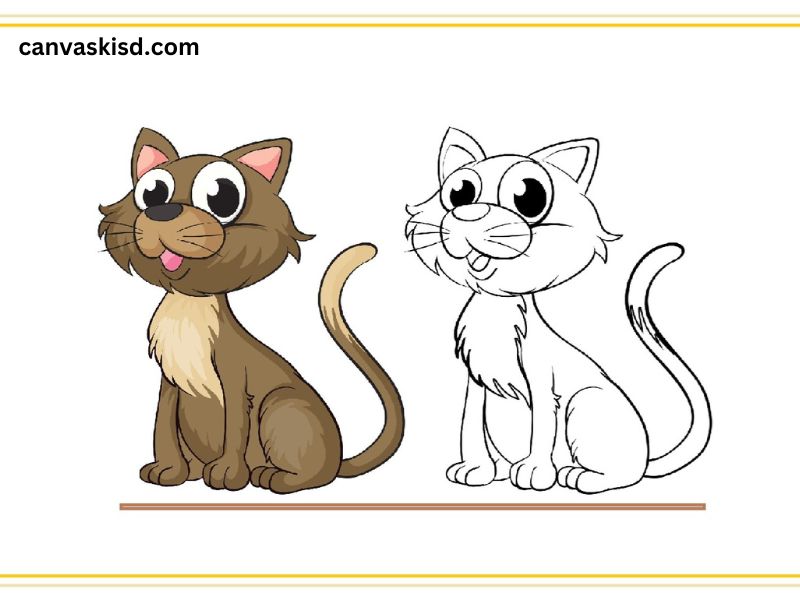Cats have fascinated humans for centuries, not just as pets but as subjects of art and culture. Their grace, independence, and mysterious nature make them an alluring choice for artists. Whether you’re a beginner or a seasoned illustrator, drawing cats can be a rewarding experience. In this article, we will explore techniques, tips, and inspirations for capturing the essence of our feline friends on paper.
Understanding Cat Anatomy
Before diving into the actual drawing, it’s essential to have a basic understanding of cat anatomy. Cats are unique in their skeletal structure and muscle definition. Their bodies are generally composed of several key features:
- Head: The shape of a cat’s head is often round or slightly triangular. Their large, expressive eyes and prominent whiskers contribute to their distinct look.
- Ears: Cats have upright, pointed ears that can swivel independently to pick up sounds. The size and shape of the ears vary among breeds.
- Body: Cats have a sleek and flexible body. Understanding the underlying structure of their spine and limbs can help in portraying movement and posture accurately.
- Tail: A cat’s tail is an important part of its body language. It can express various emotions, from happiness to irritation.
- Paws: Cats have soft, padded paws that contribute to their stealthy movements. The paw structure is essential for understanding how they walk and sit.
Familiarizing yourself with these anatomical features will help create more realistic and expressive drawings.
Tools and Materials
The tools you choose can significantly impact your drawing experience. Here are some recommended materials:
- Pencils: Start with a range of pencils, from hard (H) for fine lines to soft (B) for shading.
- Paper: Good quality sketching paper or a sketchbook will hold your pencil marks well.
- Eraser: A kneaded eraser is great for gently lifting graphite without damaging the paper.
- Fineliners or Inks: For those who prefer outlines, fineliners can help add detail and definition to your drawings.
- Colored Pencils or Watercolors: If you want to add color, these materials can bring your feline illustrations to life.
Basic Drawing Techniques
- Sketching the Outline: Begin with simple shapes to form the basic structure of the cat. Use circles for the head and body, and lines for the limbs and tail. This will help you maintain proportions.
- Adding Details: Once the basic outline is established, gradually add details such as the eyes, nose, and fur texture. Focus on the unique features of the cat you are drawing.
- Shading: To give your drawing depth, use shading techniques. Observe where the light hits the cat and where shadows fall. You can use hatching (parallel lines) or cross-hatching (intersecting lines) for texture.
- Refining the Drawing: Once the shading is complete, go over your lines and details, refining the drawing. Erase any unnecessary marks and clean up your work.
- Coloring (Optional): If you’re adding color, consider the cat’s natural fur patterns and shades. Use light strokes and build up color gradually for a more realistic effect.
Tips for Drawing Cats
- Observe Real Cats: Spend time observing real cats or reference photos. Notice their posture, expressions, and movement. This will give you a better understanding of how to portray them accurately.
- Practice Different Breeds: Cats come in various breeds, each with distinct features. Practicing different breeds can enhance your versatility as an artist.
- Experiment with Styles: Don’t hesitate to explore different artistic styles. Whether it’s realism, cartoonish, or abstract, finding your unique voice can be a fun process.
- Use Reference Images: While drawing from memory is valuable, reference images can help capture specific details. Online platforms and books can provide a wealth of images to inspire you.
- Be Patient: Drawing takes practice. Don’t be discouraged by initial attempts; instead, view them as stepping stones to improvement.
Finding Inspiration
- Art Communities: Join online forums or social media groups dedicated to cat art. Sharing your work and receiving feedback can be incredibly motivating.
- Art Challenges: Participate in art challenges or prompts that focus on cats. This can push your creativity and introduce you to new techniques.
- Nature and Wildlife: Observing cats in their natural behaviors, whether in your home or in the wild, can spark ideas for your drawings.
- Literature and Film: Cats have been portrayed in countless stories and films. Draw inspiration from your favorite cat characters in books and movies.
- Cat Rescue Organizations: Volunteering at a cat shelter or observing rescue cats can provide a unique perspective and deep emotional connection, which can translate into your artwork.
Showcasing Your Work
Once you feel confident in your cat drawings, consider showcasing them:
- Social Media: Platforms like Instagram or Pinterest are great for sharing your art with a broader audience. Use relevant hashtags to connect with fellow cat lovers and artists.
- Local Exhibitions: Look for local art shows or exhibitions where you can display your work. Engaging with the community can lead to valuable connections.
- Art Prints: Consider turning your favorite drawings into prints or merchandise. Websites like Etsy or Redbubble make it easy to share your art with a wider audience.
Conclusion
Drawing cats is not just a skill but a joyful expression of creativity. By understanding their anatomy, experimenting with techniques, and finding inspiration, you can create stunning representations of these beloved animals. Remember, the journey of art is personal, and every drawing you create is a step toward refining your unique style. So grab your pencils, observe the cats around you, and let your creativity flow!



